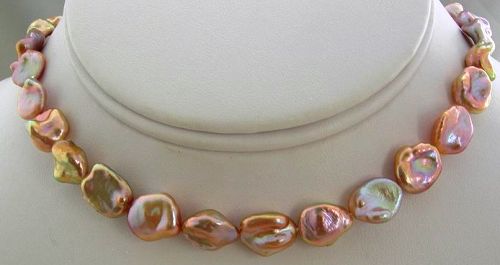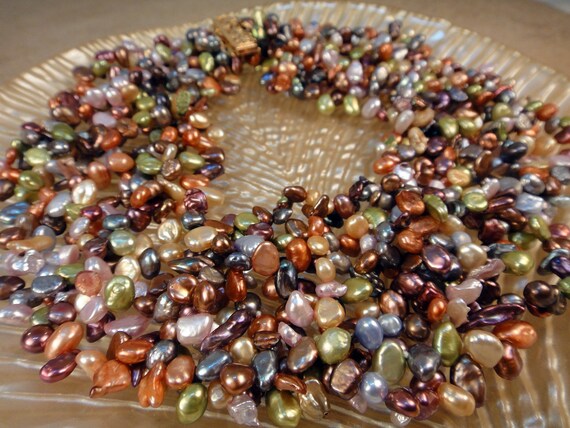KESHI CULTURED PEARLS
Summary
Keshi is Japanese for "poppyseed". Keshi pearls are just accidental byproducts of the culturing process.
Keshi pearls which can form in both freshwater and saltwater mollusks in a couple of ways. The first way is when the mollusk expels the bead nucleus, but the implanted mantle tissue still remains. This stimulates the pearl sac which instead of coating the now missing round bead nucleus with its nacre, it forms a small keshi pearl instead.
The second way is when the bead nucleus remains and is successfully coated with nacre, but implanted mantle fragments create additional pearl sacs which also creates keshi pearls as they also lack round bead nucleus.
Shape
Even though these keshi pearls are unintentional, they are still highly profitable for the pearl farmer. They can be made into a variety of jewellery types, from necklaces, earrings and other pieces that take advantage of the interesting shapes they provide.
Colour
Depending on where the keshi are farmed, they can come in all sorts of colours from blues, greys to yellows and white. They can also come in green and purple!
Because they are almost entirely made up of nacre, they are often very lustrous and full of orient - the shimmer of rainbow colours that appear on or just below a pearl's surface. Normally only the highest quality pearls show the kind of luster and orient that most keshi display.
Value
Keshi pearls that result in freshwater or akoya saltwater mollusks are quite inexpensive which makes it an affordable alternative to round pearls although Keshi pearls that occur in South Sea and Tahitian mollusks are especially rare. As such they are highly coveted and priced quite a lot higher than other keshi pearls.
Source Article:
http://www.twelvepearls.com.au/